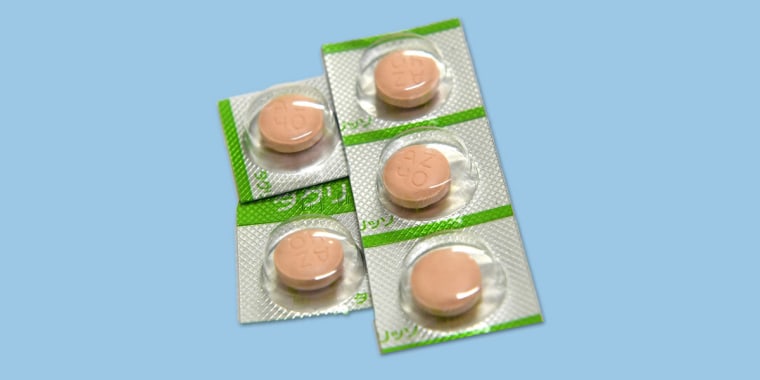A once-daily pill from drugmaker AstraZeneca cut deaths in half among a subset of early-stage lung cancer patients who had undergone surgery, according to new clinical trial results.
The findings were presented Sunday at the American Society of Clinical Oncology's annual meeting in Chicago and simultaneously published in the New England Journal of Medicine.
The data is the first to show how a targeted treatment for early-stage lung cancer impacts survival, said Dr. Roy Herbst, the trial's principal investigator and deputy director at Yale Cancer Center. The drug, called osimertinib and sold under the name Tagrisso, is directed at a specific receptor that helps cancer cells grow.
“I think we’re curing some patients," Herbst said. "We’re really showing progress in lung cancer like never before.”
The trial results were "about twice as good as we expected," Herbst added.
In an international study of 682 lung cancer patients, roughly half of the participants were given the daily pill for three years, while the other half received a placebo. Five years after their diagnosis, 88% of those who took the pill were still alive, compared with 78% of the placebo group. The study was funded by AstraZeneca and included people from more than 20 countries across the U.S., Europe, South America, Asia and the Middle East.
The researchers found that the drug lowered the overall risk of death from lung cancer by 51%.
Last year, the Biden administration set a moonshot goal of reducing the cancer death rate in the U.S. by at least 50% over 25 years.
“At least in this one area, we’ve hit the mark,” Herbst said.
Tagrisso is already approved in more than 100 countries, including the U.S. The Food and Drug Administration approved the drug in 2015 for people with more advanced lung cancer who saw their disease get worse during or after taking other treatments. Then in 2020, the agency approved Tagrisso for early-stage versions of the disease.
Herbst's research team showed three years ago that Tagrisso kept tumors from coming back and prevented cancer from spreading to the brain, liver and bone.
"We already knew that this drug was effective. However, what we are seeing now is that patients will also live longer,” said Dr. Charu Aggarwal, an associate professor of medicine at the University of Pennsylvania’s Perelman School of Medicine, who wasn’t involved in the research.
The trial included people with stages 1, 2 and 3 non-small cell lung cancer, the most common type of lung cancer.
Participants also had a mutation in a receptor called EGFR. The receptor normally helps cells grow, but the mutation can make cells excessively divide and multiply, which may cause cancer. The pill functions as an “off” switch for that mutated receptor, Herbst said.
Around 10 to 15% of lung cancer cases in the U.S. have an EGFR mutation, though it's more common in Asia and Australia. The mutation is usually detected in people with little to no smoking history.
Herbst said the new survival data could encourage more doctors to prescribe the drug. The data might also prompt wider insurance coverage of the pill, he said, since the treatment is expensive and insurers prefer to see a survival benefit before deciding to reimburse a costly drug.
Patrick Forde, an associate oncology professor at Johns Hopkins Medicine, said that before targeted treatments like Tagrisso were available, patients with stage 1 to 3 lung cancer would normally receive chemotherapy after surgery. That might improve their odds of survival by about about 5% compared to those who didn't receive chemo, he estimated. (Forde wasn’t involved in the new research, but he has consulted for AstraZeneca and obtained research funding from the company in the past.)
"If you go back 15 years, for this patient population we would have expected maybe a survival of 50% at five years," he said. "But because of the advances both for stage 4 cancer, and now this advance in earlier stage cancer, we're up to 88%."
Doctors may still recommend both chemotherapy and Tagrisso after surgery, Forde said.
Compared to chemo, Tagrisso comes with fewer major side effects. According to Herbst, some people on the pill experience skin rashes and mild diarrhea, but overall the drug is "quite well tolerated."
Jill Feldman, a lung cancer patient who has been taking Tagrisso for more than four years, said that her cancer has stopped progressing on the drug and noted that it was easy to take at home as a pill. But she added that side effects that aren’t life-threatening can still be life-altering to patients. Since she started on the drug, said Feldman, 53, of Deerfield, Illinois, she has experienced diarrhea, mouth sores, fatigue and a skin infection in her nail beds.
One lingering question, Forde said, is whether survival rates would stay the same if patients were given the pill after their cancer relapsed versus immediately after surgery. However, doctors generally recognize that treating cancer early improves survival rates.
Early screening is still a challenge, though: In most cases, Forde said, doctors don't screen broadly enough to detect lung cancer before it spreads to other parts of the body. The U.S. Preventive Services Task Force recommends annual lung cancer screenings for certain adults ages 50 to 80 with a history of smoking.
"Only about 5% of patients are being appropriately screened, and that’s in contrast to things like breast cancer mammograms or cervical screening," Forde said.
Aggarwal said many lung cancer patients aren't tested for EGFR mutations, either. The new data could be a "call to action" to increase those screenings, she said.

